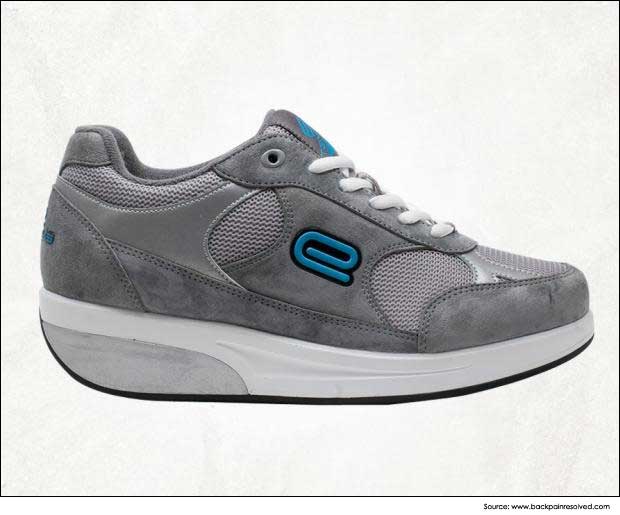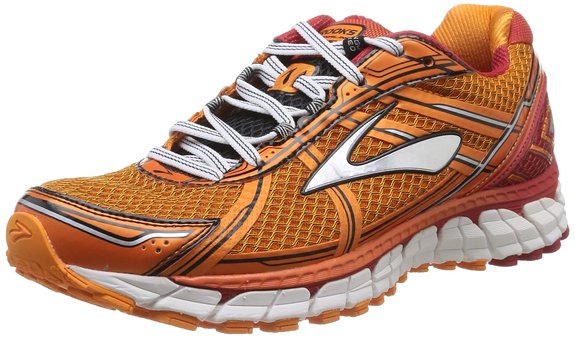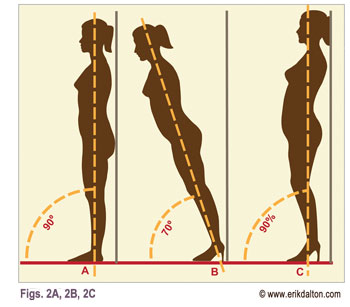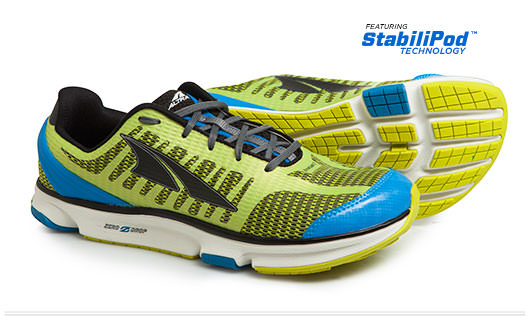There are all kinds of people who take different stands on what the “best shoe is for back pain”. You have the all-natural guys who say the closer to earth your skin is while you walk and run the better. Then there are those who claim that high dollar, supportive shoes are best for your back. What drives me crazy is most of these people follow fads or reviews on websites. You have one guy who goes out and buys a pair of Vibrams after seeing someone on the treadmill wearing them. The other guy heard from his doctor (who happens to be a marathon runner) the Brooks Adrenaline GTS’s are the beez kneez for comfort and low back pain.
Well, I hate to burst your bubble but odds are the information you’re getting from your buddy, friend, parent or doctor is wrong. There is more to a pair of shoes than asking someone else their opinion. You can go on Amazon and see tons of reviews on different shoes but you can be in a lot of pain if that’s all you go off of when it comes time to make the purchase. As a matter of fact, I did a Google search “Shoes for back pain” (seemed like a pretty average search phrase) this was the first thing that popped up!! So, sit back and kick your shoes off. This isn’t going to be your typical shoe review! Some of the links below are affiliate links. I only suggest products that I personally have used or are currently using myself.

So, back to that google image…
To say these do ANYTHING for the person wearing them is garbage advice. For the general population, these are far from anything anyone should be wearing. Which is why I am coming to you with this post.
What I want to do today is give you a guideline to follow when it comes to finding the best shoe for you and your lower back. I learned a hard lesson buying shoes that talked a big game but never delivered. I have spent everywhere from $40-$120 on a pair of shoes and you would be surprised which ones bring the most relief.
How Shoes Affect Back Pain
We have to start looking at our feet as the starting point in the kinetic chain that is our body. It took me a few years to realize their importance but once I did;
1) I stopped wasting money.
2) I finally felt like I had control over my pain management.
3) I was able to stop guessing the cause of my lower back flare ups.
Your shoes play a big role in keeping the rest of your body aligned properly. The problem that most people have is they rely on their shoes to correct whatever issue they have with their feet.
For example, I have really flat feet, like duck flat. If I’m not careful and don’t take the time to practice awareness in how I walk and stand, it doesn’t take long being in the wrong shoes for my back pain to flare up. On top of that, my now degenerative L5-S1 disc is sensitive to harsh angles my shoes put me in. Combine flat feet and a degenerative disc and believe me, it’s not long before I have to sit down or start popping Tylenol.
In my experience and research, I have narrowed it down to 2 main reasons why your shoes could be causing you back pain.
The Angle:
A lot of people don’t make this connection with the shoes they wear. It’s not just the ladies wearing high heels who need to watch out. The fellas need to pay more attention as well. I personally have experienced pain wearing anything that has a heel. Including running shoes. Yeah, it’s crazy to think that wearing running shoes would do that but if you think about it makes total sense. When it comes to dress shoes and a lot of nicer casual shoes, they typically have a pretty gnarly heel. This angle can throw off the rest of your body especially for me when it comes to having an issue with over extension (duck butt). The added height to my heel brings my center of gravity forward, forcing me into a more extended position as my pelvis tilts forward to try and correct the offset.
For me, having a ruptured and now degenerative disc, the slight tilt forward is an added stress on that joint which causes inflammation over a short period of time. This same way of thinking can translate over to the running shoes. Running shoes worn for casual occasions tend to put the wearer in a similar position as the dress shoes, simply because all the cushion and support is in the heel. I recently purchased a pair of Brooks Adrenaline GTS which are great running shoes but not good for just standing around in. I purchased them strictly for comfort while i’m on my feet, since all shoes that are over $100 are guaranteed to give you gobs of comfort (enter sarcasm). The only time I really do get the benefit of wearing my Brooks is when I do A LOT of walking or I run. Considering I’m not the running type that’s typically not very often.
Your story may be completely different. Some people are completely sold out for their Brooks (enter favorite running shoe brand) but those people are typically runners. They are buying these shoes to give them the same support that I am looking for but the major difference between us is they are actually using them for running where I am wearing them for everyday walking and standing (9+ hours a day). There is a difference
The Support
As Americans, we rely way too much on other people or things doing the dirty work for us. We don’t want to change our eating habits so we get lipo suction or our stomachs stapled. When it comes to our feet we don’t have the time or even want to think about having to correct our foot position or standing posture. Instead, we are good at seeing specialists who put us in “special shoes” to do it for us. Now, don’t get me wrong I understand there are some real situations where we can’t repair our feet on our own, but for the average adult a little awareness will go a long way.
I use my experience wearing Vibram Toe Shoes for over a year straight when I explain the importance of learning proper foot position or needing support. Even with my flat feet, I was a die-hard Vibram wearer. The reason why I was able to do it even with the structural issues I had were because I was constantly mindful of how I was standing and where my weight distribution was at. I was so passionate about those shoes and people actually learning how to use them properly I made a video about it: Be kind this is me 4 years ago as a full-time trainer 🙂
After wearing these shoes for a while I started to notice more and more people wearing them (they had just hit the market). Unfortunately, most of these people didn’t pay any mind to the way they were running or walking. They just liked the idea or maybe to them they were comfortable. The problem is, just because you’re taking yourself out of “over supportive” shoes like Brooks, it doesn’t mean you need to jump right into a minimal style shoe to fix your problem. If anything, the minimal style shoe requires more attention to detail and will-power to constantly be thinking about your foot position until it becomes second nature to you. Then and only then will you ever see the true benefit of the minimalist style shoe. So, for the average person looking to get out of the “over supportive” shoe I say do it only if you’re willing to put in the effort to correct what’s wrong with your mechanics.
So, what shoes are best for back pain?
In closing, I want to leave you with a little advice. Do not buy shoes based off of their reviews. You need to ask yourself these questions:
- What current issues do I have now?
- What do I do all day, do I stand and teach? Do I run around and play with kids or young adults or do I stand at a computer station?
- Do I over pronate (flat feet)?
- Do I over supinate (tall arch)?
- Do I walk with my feet pointed in or out?
- How do I stand?
- Are my toes facing forward or pointing in or out?
These questions play a big role in the shoes you need to spend more time experimenting with. Sometimes the shoes that give the most cushion and support are not always the best for you when it comes to back pain. If you’re looking for a new pair of running shoes to RUN in then yes, you want to pay close attention to what the reviews are saying. If you’re looking for a pair of shoes that will help with back pain then you may have to try a few out before you nail it down but keep in mind, the closer you can get to proper foot and body position the better. Just be sure to buy the shoes that will help fix the problem not create more for you.
If you need “support” than learn how you can repair your issues for yourself and wear shoes that will help you continue to work on those repairs as you wear them. Don’t get the high end shoes and rely on them to do the work.
At the same time don’t think that minimal style shoes will help you fix your issues. They will highlight your issues and create problems if your not being proactive in fixing them.
I know for me, I have developed pretty good body awareness and know what proper standing and walking should look like so believe it or not I can get a lot of relief from wearing a $40 pair of Classic Vans compared to my $120 Brooks. Not that the Brooks aren’t comfortable but when it comes to my lower back inflammation, you will probably see me wearing the Vans only because I know the Vans won’t put my body into a position that I personally can’t correct myself.
In my continued pursuit of the perfect shoes, there are 3 things that I look at.
- Zero Drop: This basically means from the heel to the toe there is NO angle. It’s a flat surface.
- Wide Toe Box: This is a new concept for me but once you go wide toe box you will never go back to the regular shoes again. The wide toe box allows room for your toes to spread while you walk and run. Instead of shoes like Brooks where the toe box is narrow and keeps your toes bunched together. The wide toe box is the opposite. Best thing to happen to me since Ramen Noodle.
- Light cushion: I don’t want too much material between me and the ground. Where Vibram toe shoes are the extreme, I want a bit more cushion than those.
So far, the only company that I have found to really harness all of these qualities that I feel everyone should look for is Altra Running Shoes. (this is their main site where you can see what models would be best for you. You can buy them other places and save a few bucks if your into that sort of thing 😉 ). Even though I am not a runner, I am active. I am standing for hours a day, walking and training. I need a shoe that is versatile to be able to handle whatever I throw at it but most importantly not causing irritation in my lower back.
The exact shoe that I personally wear on a daily bases are these bad boys here. Altra Provisions 2. I 100% stand behind this model and style simply because I am a consumer just like you. I am looking forward to beating these things up so that I can try a new pair out! I have my eyes on the trail shoes next. Either the Lone Peaks or Superior Line.
You do not have to be “active” to wear these shoes. If you have a daily walking shoe or basic sneaker then these shoes can replace those. The goal is to chip away at what could be causing irritation in your lower back and there is no doubt in my mind that your shoes will only help or hurt you in the long run so choose wisely!
So how about you?
What shoes do you typically wear all day and how do they make you feel? Let me know in the comment section below!
TTYS,
William
Reminder: Some of the links above are affiliate links to products that I personally use or have used myself.






I switched to Altras about 3 years ago (Timps) for trail running and hiking and my back pain went away. Also a huge fan of the toe box on Altras. However, the zero drop also places more strain on the achilles tendon if you don’t carefully stretch your calves. As I approach 60, that’s becoming more of a problem, particularly on cold morning runs. Recently overdid it, had to take a month off to heal and then switch to NB shoes with 8mm drop. Achilles tendon good. Back pain is returning. I will switch back up to Altras as soon as the weather warms up.
Been mostly a Saucony shoe road runner for over 40 years now (Pearl Izumi on trail runs), but my low back pain has really been bothering me and i was wondering if more cushion or less is better for the back. I also have a scoliosis and rotation of my spine and I know that probably has something to do with it (and lets not forget age: >60). Anyway, I broke down and bought a pair of Nike Zoom Alphafly shoes and a pair of Hoka Rincon 2 (recommended by a triathlete friend who had a metatarsal injury from the Zooms (the Vaporfly)). I’ve done a 3-mile run in both pairs, but also took 400mg of ibuprofen and slathered Aspercreme with lidocaine on my back before the run. I simply don’t know and was hoping for recommendations. Thoughts?
Hey Mare Ccheck out this video
It is interesting that you recommend a zero-drop shoe. My wife has a lot of back pain and we are trying to figure out how to relive it a little. We may also consider looking for a professional that may be able to help.
They are great and have been a game-changer for me and how I look at foot health and how the body responds. There are lots of brands out there to try!
This is basically the kind of ‘google tell me what I want to hear’ that I needed.
Flat feet here as well and felt like my new NB Vongos made my low back pain noticeable, whereas my worn out NV Zantes that are feeling like Vibrams in comparison didn’t notice it yesterday. Nearly blew out my back recently, so much of it really could be I’m finally healing and taking better care of it. (swinging a golf club less, for instance).
Funny thing is I started caring about my shoes, finally, years ago for knee pain and working outside caddying. Former fat kid here who started jogging to help beat the fat. Asic gt-2000 was my go to, adding ortho inserts. Haven’t done ortho in a while, maybe putting them in my Vongos will help…..a big problem is they’re like clown shoes. Supposed to be the same as my other Vongos, but not the case. They look and feel like clown shoes. An extra size and too wide. Feet slide around.
Anyways, dog walk time with the minimal shoes. (maybe try old ortho with the clown shoes next time!)
I am wondering about arc support. I bought some Nike running shoes with very little drop, but I noticed while standing I seem to be putting most of my weight on the arc support portion of the shoe. Standing on my arches doesn’t seem natural.
I have ran in several types of good running shoes like brooks adreneline and asics and stability shoes that claim to be the best truth is to much cushion hurts your low back not enough hurts your knees the all around best and has been for me for years is brooks adrenailine gts I probly will buy these till my running day are over
I have upper ,middle, and low back problems. I have recently switched from Asics to brooks that’s a whole other
story in its self. But in trying all shoes in my closet I have come to the conclusion that a good physical therapist
is what we all need. They teach you how to build muscle in your body and correct the way you walk incorrectly.
I was ballet for a lot of years and had to rethink the whole way I walked. But shoes, have I found the ultimate shoe?
No! I think as long as shoes are outsourced and the inconsistency in quality and sizing are an issue we will never get a good fit. But I am always open to a good tip on a good American made shoe.
Yeah, it’s not so much how the shoe fits our specific foot but what the shoe tries to compensate for. Our feet were not designed ot be stuffed in shoes. We need to be able to spread our toes and feel the ground beneath us. Its what connects out body with our surroundings. I know that may sound a big “earthy” which I am far from that type of coach but I just speak from experience and what I have seen the most success with. The closer your feet can be to the ground and the more space they have to be used as “feet” the better you will feel!
A good physical therapist is vital, ask him or her about shoes.
Hey Marie! Thanks for your comment! yes, A good PT will help, you just need to watch out for them going straight to using things like boots or orthotics to fix issues.Talk with them about strengthening and working with tissues first before anything like that.
Hi,
Great article.
I think you missed the 4’th point:
Get a soft sole, because these heel ticking when walking, really causing me inflammation.
I would rather be as close to the ground as possible. Soft soles just throw off my own foot control and mechanics. What about you?
Thanks for your insight. I have been doing Pilates for about 3 years now, and believe my feet have changed. I definitely stand better, am more aware of my body, and have better posture. My back and neck pain is very minimal. I have my fourth ‘trial’ pair of shoes at the moment, and i still feel they are not comfortable. The sales people keep offering running shoes as an every day shoe (I work in school aged care). I have even paid $200 for the shoes, which is $150 above my budget! And I am taking them back to exchange them today!